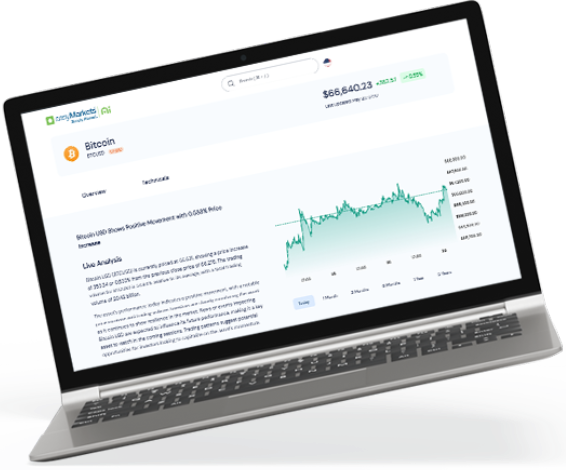What is Continuation Gap Trading

Continuation Gap Trading strategies exploit market openings, moments when prices in strong trends make sudden jumps, often signaling a continuation of that trend. Also known as Runaway or Measuring Gaps, these occur when prices seem to 'run away'. Traders use these market openings to predict how long a trend might last and decide where to enter or exit trades.
Understanding Continuation Gaps
Traders who adopt Continuation Gaps consider them an integral element of Gaps trading. These market openings are not seen as random; they are perceived as indicators that a trend is strong and likely to keep going. For such traders, recognizing a Runaway Gap means seeing an opportunity. When such a trader spots one, they interpret it as a sign that the market momentum is with them, and it’s usually a good time to consider entering or staying in a trade in the direction of the trend. These traders hope to ride the wave of the trend, potentially increasing their chances of a profitable trade. For them, it’s all about spotting and acting on these powerful hints the market gives them.
These traders hope to ride the wave of the trend, potentially increasing their chances of a profitable trade. For them, it’s all about spotting and acting on these powerful hints the market gives them.
What is a Continuation Gap?

These market openings are thought of as clues in the middle of a price trend that help traders guess how long the trend will last. When prices leap during a trend with minimal pullback (temporary reversals in price directions) - either upward in bullish trends or downward in bearish ones - this is where traders might see these market openings.
If prices jump up during an uptrend, that's a bullish Gap.
If they drop during a downtrend, that's a bearish Gap.
Continuation Gaps signal a strong push from buyers or sellers, which is often triggered by significant news that supports the ongoing trend. Traders use these market openings to decide when to enter or exit trades, placing safety stops just below or above the Gap to protect their positions.
Characteristics of Continuation Gaps

Runaway Gaps have distinct features that make some traders believe them to be indicators in trading. Here are their key characteristics:
Follow the Trend: These market openings move in the same direction as the current trend—up in an uptrend and down in a downtrend.
Show Strong Trends: They appear during strong and well-established trends, suggesting that the trend is likely to keep going with strong momentum.
Increased Activity: Often, more people are trading (higher volumes occur) when these market openings appear, making them more significant.
Mid-Trend Signal: They usually show up around the middle of a trend, helping to estimate how long the trend might last.
Steady Continuation: These market openings don’t typically lead to quick reversals, showing that the trend is strong.
Differences between Continuation Gaps and Other Types of Gaps
When trading, individuals who notice Gaps in price charts try to find clues about what might happen next. Apart from the titular Continuation Gap, there are 3 other common types – Common, Breakaway, and Exhaustion. Here's how Runaway Gaps compare to other market openings:
Common Gaps: These occur randomly and don’t usually mean much as they are not related to any specific price pattern. Common Gaps often fill up quickly.
Difference to Continuation Gaps: Common Gaps typically come with average volume (normal amount of trading) and don’t offer predictive value, whereas the opposite is true with Runaway Gaps.
Breakaway Gaps: These signal the start of a new trend as prices Gap away (suddenly jump) from a stable area, such as Support or Resistance Levels, a movement often accompanied by high volume (a lot of trading activity).
Difference to Continuation Gaps: Common Breakaway Gaps suggest the beginning of a movement, whereas Runaway Gaps suggest the ongoing momentum of a trend.
Exhaustion Gaps: These appear at the end of a price pattern, indicating a final push in the trend before a likely reversal, typically on heavy volume.
Difference to Continuation Gaps: Exhaustion Gaps mark the end of a trend, whereas Runaway Gaps represent a part of the trend's middle phase, pushing the trend further without indicating its end.
Strategies for Trading Continuation Gaps
There are several ways in which these market openings are incorporated into some traders’ strategy.
One key strategy is Trend Confirmation, where market openings are leveraged to confirm the continuation of a bullish or bearish trend. When a Continuation Gap occurs, it often signals that the current trend is strong and likely to continue. This allows traders to enter or add to positions in the direction of the market opening.
Entry and Exit Points

Trend Confirmation: When a Continuation Gap shows the trend is still strong, this is considered a good time to jump in. Traders enter the trade in the direction the trend is moving right after the market opening appears. They plan their exit by setting a goal for their profit or watching for signs the trend might be slowing down, so they can get out at the right time and protect their gains.
Combining Continuation Gaps with Other Indicators

Pairing Continuation Gaps with other key indicators is often considered helpful by traders who utilize this strategy.
Moving Averages can confirm the trend direction—when a Gap aligns with these averages, it strengthens a trader’s confidence in the trade. Volume Indicators like On-Balance Volume can reveal if there’s strong market participation behind the gap. Momentum Indicators such as RSI or MACD help traders see if the market might be overextended, reducing the risk of a bad trade. Support and Resistance Levels are great for setting smart exit points, while Bollinger Bands show potential price movements, helping traders gauge if the trend will keep going.
Continuation Gap Example

In early January 2023, Alibaba's stock provided a classic example of a Runaway Gap in trading. On January 3rd, Alibaba's shares closed at $91.96, but by the opening of the market on January 4th, the price had leaped to $98.70. This significant price jump was triggered by news that Alibaba’s founder, Jack Ma, had sold his ownership, leading to renewed investor confidence. The economic atmosphere shifted dramatically when Jack Ma relinquished control of the fintech giant. This move was perceived positively by the market, sparking a rally in Alibaba's shares. It coincided with an overall gain in the Hang Seng index and brought some stability back to Alibaba’s stock after a turbulent period. This Runaway Gap illustrates how external events such as leadership changes can significantly impact stock prices, driving sharp movements that align with the broader trend. For Alibaba, this Gap not only marked a rebound but also suggested a potential easing of tensions with Chinese regulators, setting a bullish tone for the stock as it entered 2023.
The economic atmosphere shifted dramatically when Jack Ma relinquished control of the fintech giant. This move was perceived positively by the market, sparking a rally in Alibaba's shares. It coincided with an overall gain in the Hang Seng index and brought some stability back to Alibaba’s stock after a turbulent period.
This Runaway Gap illustrates how external events such as leadership changes can significantly impact stock prices, driving sharp movements that align with the broader trend. For Alibaba, this Gap not only marked a rebound but also suggested a potential easing of tensions with Chinese regulators, setting a bullish tone for the stock as it entered 2023.
Advantages
Some traders have recognized Continuation Gaps as tools, especially in scenarios like Alibaba’s stock surge as they:
Confirm Market Trends: These market openings indicates strong and sustained market movements. In Alibaba’s case, the Gap confirmed a positive shift in investor sentiment.
Find Opportunities for Timely Entry: They offer a clear signal for entering a trend at the right moment, potentially maximizing gains as seen when Alibaba’s stock price jumped following leadership changes.
Reliable Indicators: With high trading volumes often accompanying these market openings, they’re dependable signs that a trend is strong.
Plan Trades: By understanding Runaway Gaps, traders try to predict how long a trend might last, helping them plan their strategies more effectively.
Disadvantages
While Continuation Gaps are adopted by traders, they come with drawbacks:
False Signals: Sometimes these market openings may appear to signal a continuation but instead lead to reversals, misleading traders.
Market Volatility: Runaway Gaps can occur during volatile market conditions, making it harder to predict long-term trends reliably.
Conclusion
Continuation Gaps are viewed as indicators of ongoing trends by some traders. These price jumps are used as a guide by some traders on when to enter or exit the market, aligning with the current momentum for potentially higher gains. Understanding and using these Gap trading strategies is a goal for some traders who are looking to make moves based on strong market trends.
While they come with challenges such as timing and potentially misleading signals, some traders find them to be of considerable value. For example, these traders try to predict prolonged market moves with them, as seen with Alibaba’s stock surge, providing a lucrative opportunity for those who spot them early. This combination of strategic insights and practical outcomes is often noted by traders who focus on refining their market strategies through spotting Runaway Gaps.
Disclaimer: The information provided in this article is for educational purposes only and should not be construed as advice, a suggestion, or promotion of any particular trading strategy or the use of easyMarkets' industry-exclusive features. easyMarkets does not condone, endorse, or promote the trading strategy(ies) discussed herein or their application in bad faith. Readers should conduct their own research and consider their individual financial situations before engaging in any trading activity. Trading involves risk, and it is important to trade responsibly.
Please Note: Any opinions, news, research, analyses, prices, other information, or links to third-party sites contained on this website are provided on an “as-is” basis, are intended only to be informative, is not an advice nor a recommendation, nor research, or a record of our trading prices, or an offer of, or solicitation for a transaction in any financial instrument and thus should not be treated as such. The information provided does not involve any specific investment objectives, financial situation and needs of any specific person who may receive it. Please be aware, that past performance is not a reliable indicator of future performance and/or results. Past Performance or Forward-looking scenarios based upon the reasonable beliefs of the third-party provider are not a guarantee of future performance. Actual results may differ materially from those anticipated in forward-looking or past performance statements. easyMarkets makes no representation or warranty and assumes no liability as to the accuracy or completeness of the information provided, nor any loss arising from any investment based on a recommendation, forecast or any information supplied by any third-party.

Continuation Gap Trading strategies exploit market openings, moments when prices in strong trends make sudden jumps, often signaling a continuation of that trend. Also known as Runaway or Measuring Gaps, these occur when prices seem to 'run away'. Traders use these market openings to predict how long a trend might last and decide where to enter or exit trades.
Frequently Asked Questions
To spot a Runaway Gap, traders look for a noticeable break between two trading periods where the price jumps sharply without any trades occurring between the two price levels. This Gap often appears in the middle of a trend and is accompanied by high trading volume, reinforcing the likelihood that the trend will persist.
Runaway Gaps can be misleading. They work as part of a broader trading strategy that considers the overall market context.
If they miss the initial move following a Continuation Gap, traders avoid chasing the market. Instead, they wait for a pullback or consolidation within the trend for a better entry point to minimize risk and maximize potential return.














